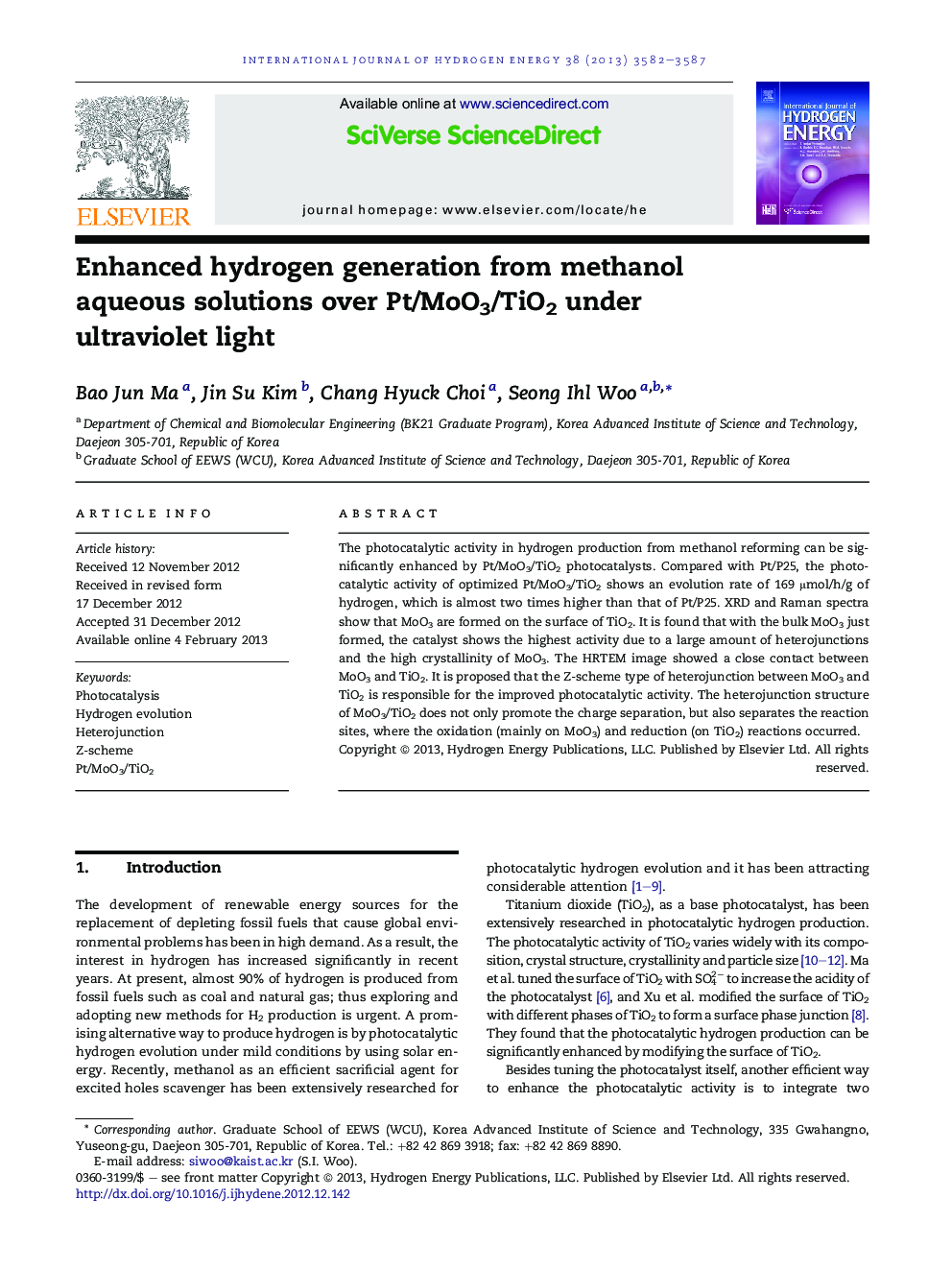| Article ID | Journal | Published Year | Pages | File Type |
|---|---|---|---|---|
| 1275574 | International Journal of Hydrogen Energy | 2013 | 6 Pages |
The photocatalytic activity in hydrogen production from methanol reforming can be significantly enhanced by Pt/MoO3/TiO2 photocatalysts. Compared with Pt/P25, the photocatalytic activity of optimized Pt/MoO3/TiO2 shows an evolution rate of 169 μmol/h/g of hydrogen, which is almost two times higher than that of Pt/P25. XRD and Raman spectra show that MoO3 are formed on the surface of TiO2. It is found that with the bulk MoO3 just formed, the catalyst shows the highest activity due to a large amount of heterojunctions and the high crystallinity of MoO3. The HRTEM image showed a close contact between MoO3 and TiO2. It is proposed that the Z-scheme type of heterojunction between MoO3 and TiO2 is responsible for the improved photocatalytic activity. The heterojunction structure of MoO3/TiO2 does not only promote the charge separation, but also separates the reaction sites, where the oxidation (mainly on MoO3) and reduction (on TiO2) reactions occurred.
Graphical abstractThe Photocatalytic H2 Evolution Reaction on Pt/MoO3/TiO2. We proposed that a Z-scheme mechanism occurs in photocatalytic H2 evolution on Pt/MoO3/TiO2 photocatalysts. The MoO3 mainly promotes the CH3OH oxidation reaction and the TiO2 is mainly responsible for the H2 evolution reaction. The heterojunctions with Z-scheme type which not only promote the electon–hole pairs separation but also separate the two half reactions of photocatalysis into two semiconductorsthat are responsible for the enhanced photocatalytic activity. Figure optionsDownload full-size imageDownload as PowerPoint slideHighlights► Pt/MoO3/TiO2 was firstly reported for photocatalytic hydrogen evolution. ► The optimum activity of Pt/MoO3/TiO2 is 2 times higher than that of Pt/P25. ► When bulk MoO3 was just formed, Pt/MoO3/TiO2 showed the highest activity. ► The Z-scheme type of heterojunction is responsible for the improved activity. ► Heterojunction promotes charge separation and separates the reaction sites.
